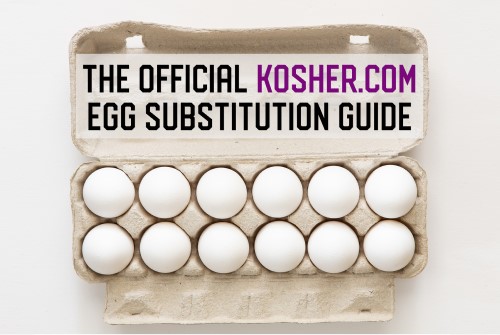by: Jason Hewett, Lubicom Staff
I’ve loved macaroons since I was a boy, but I always wondered how could something so soft and bread-like be kosher for Passover?
The answer lies in egg whites. Properly beaten egg whites, that is.
Whereas yeast makes dough rise because of carbon dioxide released from the yeast eating sugar molecules, beaten egg whites have pockets of air that are formed during the beating process. When you beat an egg white, you are essentially realigning protein and water molecules to create a new molecular structure of the egg white. When you cook egg whites, the gas bubbles expand, causing your structure to rise, and if whipped properly, without destroying the structure. This is why macaroons can be so brittle and have so many tiny holes.
Why Use Egg Whites and Not the Whole Egg?
Nutritionally speaking, egg whites contain less calories and fat than whole eggs, and there’s a lot of debate as to whether or not egg whites are healthier than whole eggs. For recipes, we can say for sure that egg whites are used to add volume and act as a leavening agent, whereas egg yolks provide fat, flavor and tenderness.
This is why egg yolks work well in custard, to give it that thick and rich texture without making it rise. On the other hand, egg whites work better for things like meringues and macaroons, to make them light and airy and deliciously delicate. Using a whole egg in those recipes would throw off the structure and texture of those foods, but when it comes to dishes like scrambled eggs, omelets, or egg drop soup, it’s more a matter of personal preference, and you can use any part(s) of the egg you like.
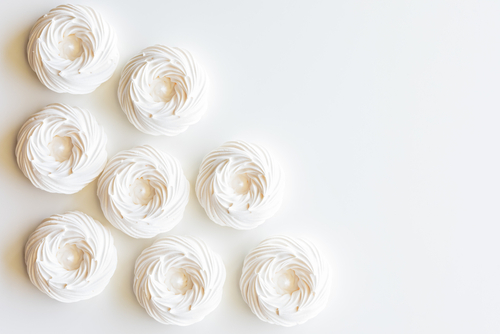
When it comes to Passover recipes, egg whites are so popular because they mimic the role of leavening in dishes like kneidlach. While egg whites don’t make dough rise, they help give the foods a more light and airy texture. Some recipes for kneidlach call for whole eggs instead of egg whites, and you can expect them to be a bit denser than those made with strictly egg whites.
You can substitute egg whites for whole eggs on a two egg whites to one whole egg ratio, or 1/4 cup of egg white substitute per whole egg.
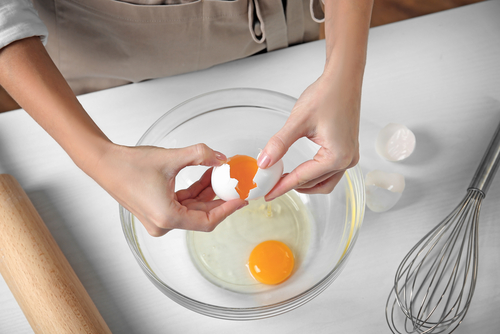
3 Ways to Separate Egg Whites
Pass the Yolk – Crack your egg on a flat surface, and holding over a bowl, gently peel back the top half of the egg so that the yolk falls into the bottom half. As you do this, some of the whites will fall into the bowl. Gently pass the yolk from one half of the eggshell to another, and repeat as necessary until all the whites are separated.
Scoop Method – Crack your egg into a bowl and reserve half of its shell to scoop out the yolk. The piercing edge of the shell helps you penetrate and isolate the yolk. You can also use a metal spoon or 1/4 cup measure to do this.
Gadget Method – Crack your egg directly into an egg white separator. The whites will slowly drain into your bowl, leaving the yolk behind.
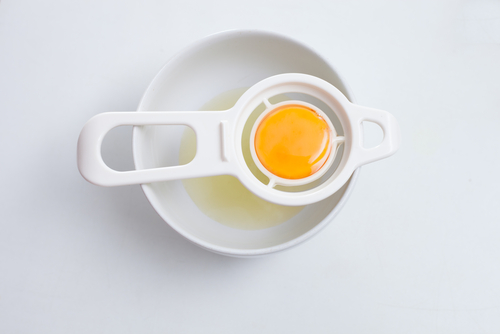
General Tips for Beating Egg Whites
– You may use a hand whisk or egg beaters. Either way, you must beat your eggs in a metal or glass bowl, because plastic will draw out certain fat molecules from the egg and ruin your structure. It’s best not to use a plastic whisk for the same reasons.
– Some recipes call for vinegar. This helps prevent lumpy, watery, egg whites.
– Many recipes call for adding sugar while beating the eggs; this helps them cook evenly and also helps strengthen the chemical bonds. Adding sugar in the beginning makes it take longer for your eggs to foam. Be sure to use the finest sugar possible so that it dissolves faster.
– It’s best to use eggs that are cold and fresh, as their chemical bonds will be inherently stronger than other eggs.
The Stages of Egg White Beating
Pre-beaten The egg whites are viscous liquid and mostly transparent. Be sure there are no bits of shell!
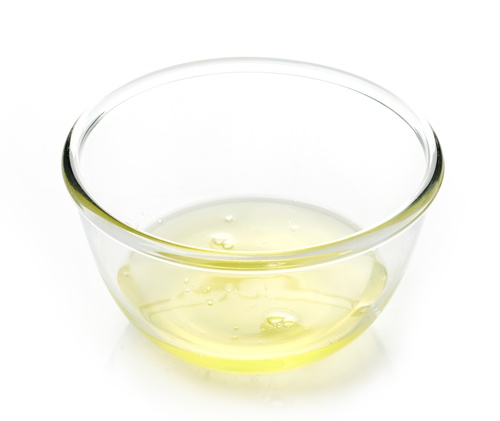
Foamy: The egg whites are slightly opaque, mostly liquid, and may have some bubbles. This is used to clarify clear broths in soups, or remove fat from them. The beaten whites draw in traces of fat and other particles which can then be easily skimmed or strained from the broth.
Soft Peaks: The egg whites are now white, will hold their shape in the bowl, and will not slide out if the bowl is tipped sideways. When the beaters or whisk is lifted out of the egg whites, they will form soft peaks that slump over to the side.
The egg whites have taken on a white color, almost like the consistency of cool whip. When you remove your whisk, it will form a soft peak that will slump over.
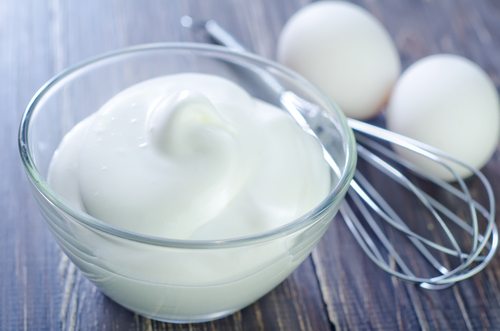
Soft peak egg whites are used as leavening in angel food cake, waffles, and soft meringues.
Firm Peaks: The eggs are completely white and when you remove the whisk, the peak should stand erect. Another test is if you turn the bowl upside down and the egg whites don’t fall out, you’ve successfully reached the third and final stage.
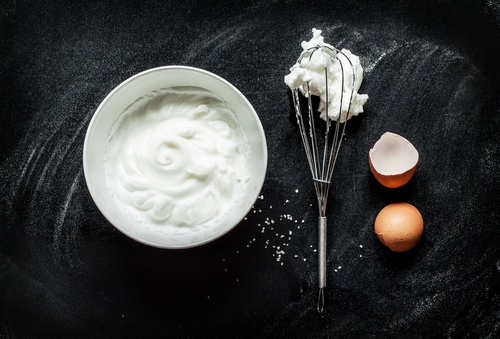
Firm peak egg whites are used for hard meringues, soufflés, and ice creams.
Over-Beaten Egg Whites: If egg whites are beaten past the point of stiff peaks, they will start to become liquidy and fall apart. Some say over-beaten egg whites can’t be salvaged, and for baking recipes it’s probably best to start over if you reach this stage.
That said, there are some techniques for saving over-beaten egg whites, most notably adding an additional egg white and beating to desired consistency. Over-beaten egg whites also work fine in egg drop soup or combined with flour to make a pancake batter.
Vegan Egg White Substitutes
Aquafaba (bean water) is one of the most popular and natural vegan substitutes for egg whites. You can make aquafaba by soaking beans, or by draining the liquid of a can of white beans such as chickpeas or great northern beans, and then whipping it as you would egg whites. You can substitute roughly two tablespoons of aquafaba for one egg white. Bear in mind the whipping process takes a bit longer, so it’s best to use a mixer if you have one, and the flavor of chickpea aquafaba can be quite strong so it will likely work better for savory dishes than sweet. Using orange extract and cinnamon can help disguise the chickpea flavor in sweet dishes,
Some recipes also allow egg white substitutes such as applesauce, mashed bananas, or soy lecithin. Other recipes, like this vegan eggless cake don’t need eggs and can allow eggless dough to rise on its own.
Check out our Egg Substitution Guide HERE!
Egg Whites Done Right
There are many ways to crack an egg, separate its parts, and use them in different recipes. Ultimately using egg whites, egg yolks, whole eggs, or vegan substitutes for eggs comes down to a matter of preference. So long as you understand the roles they play in cooking, you can eggsperiment to achieve different outcomes.



